What Is SEO Copywriting?
Copywriting for SEO (search engine optimization) is the process of creating search engine-friendly content that—most importantly—caters to users and their questions. When done right, SEO copywriting can help boost your rankings and satisfy your users at the same time.
In this guide, we’ll review the basics and cover 10 tips that will help you become a top-notch copywriter.
Why Is Copywriting Important?
Before we dive into the specifics of writing copy, let’s start from the beginning.
SEO requires the ongoing maintenance of your site's web presence to rank high on search engines—and this includes content.
SEO copywriting is the process of using keyword research and SEO strategy to create web content for users. Search engine crawlers prioritize content that serves users, which is where copywriting comes in.
Copywriters typically create a variety of different deliverables depending on client needs, including:
Blog posts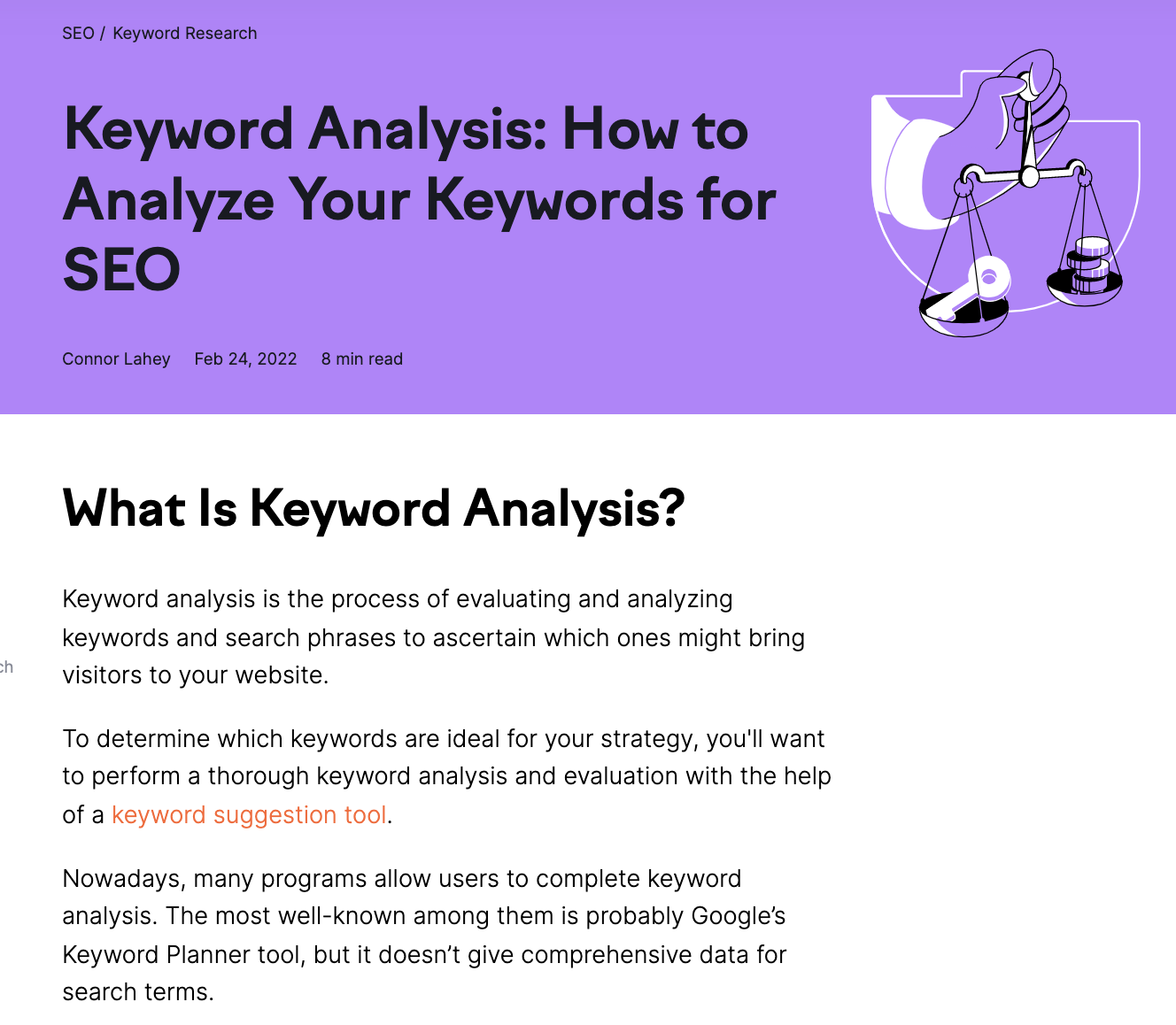 Web pages
Web pages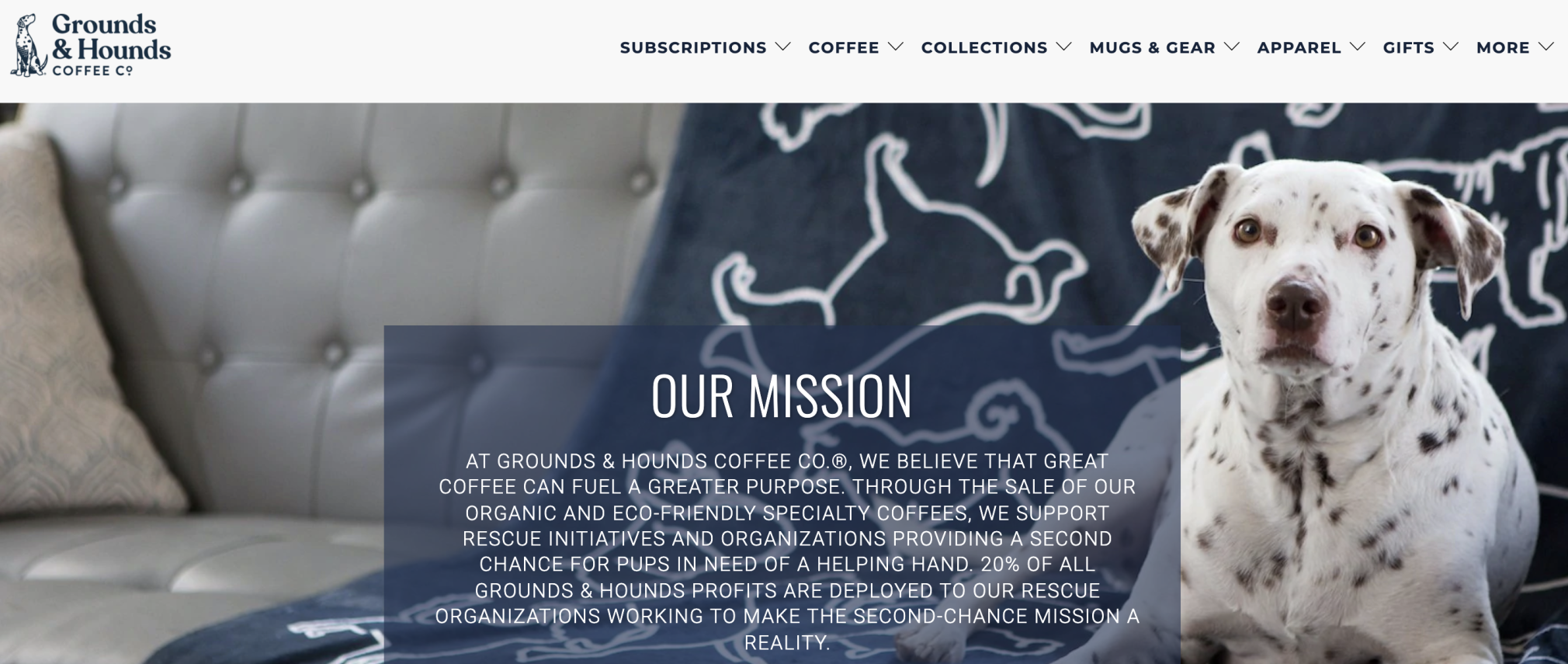 Ebooks
Ebooks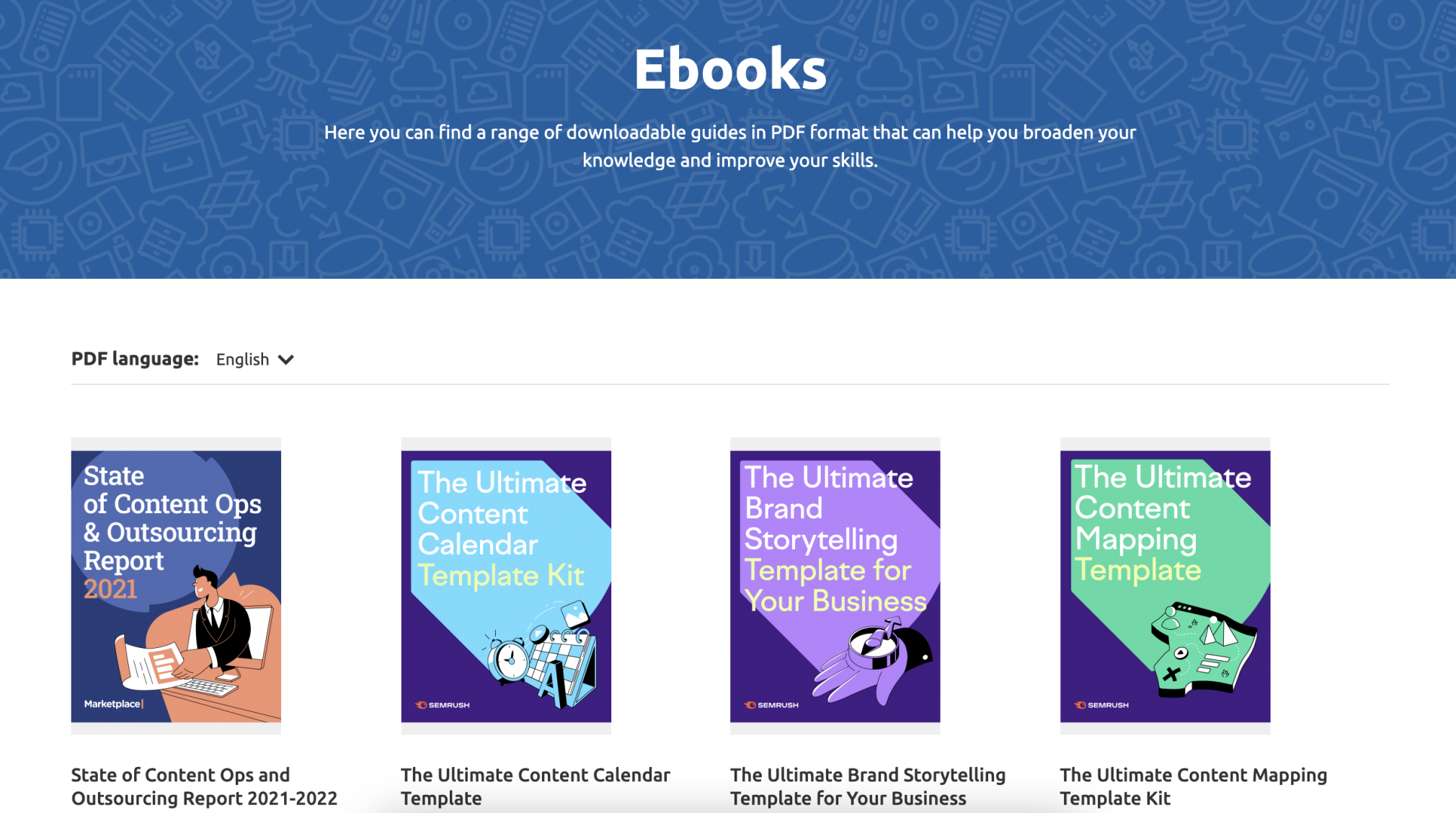 Ad copy
Ad copy Website content
Website content 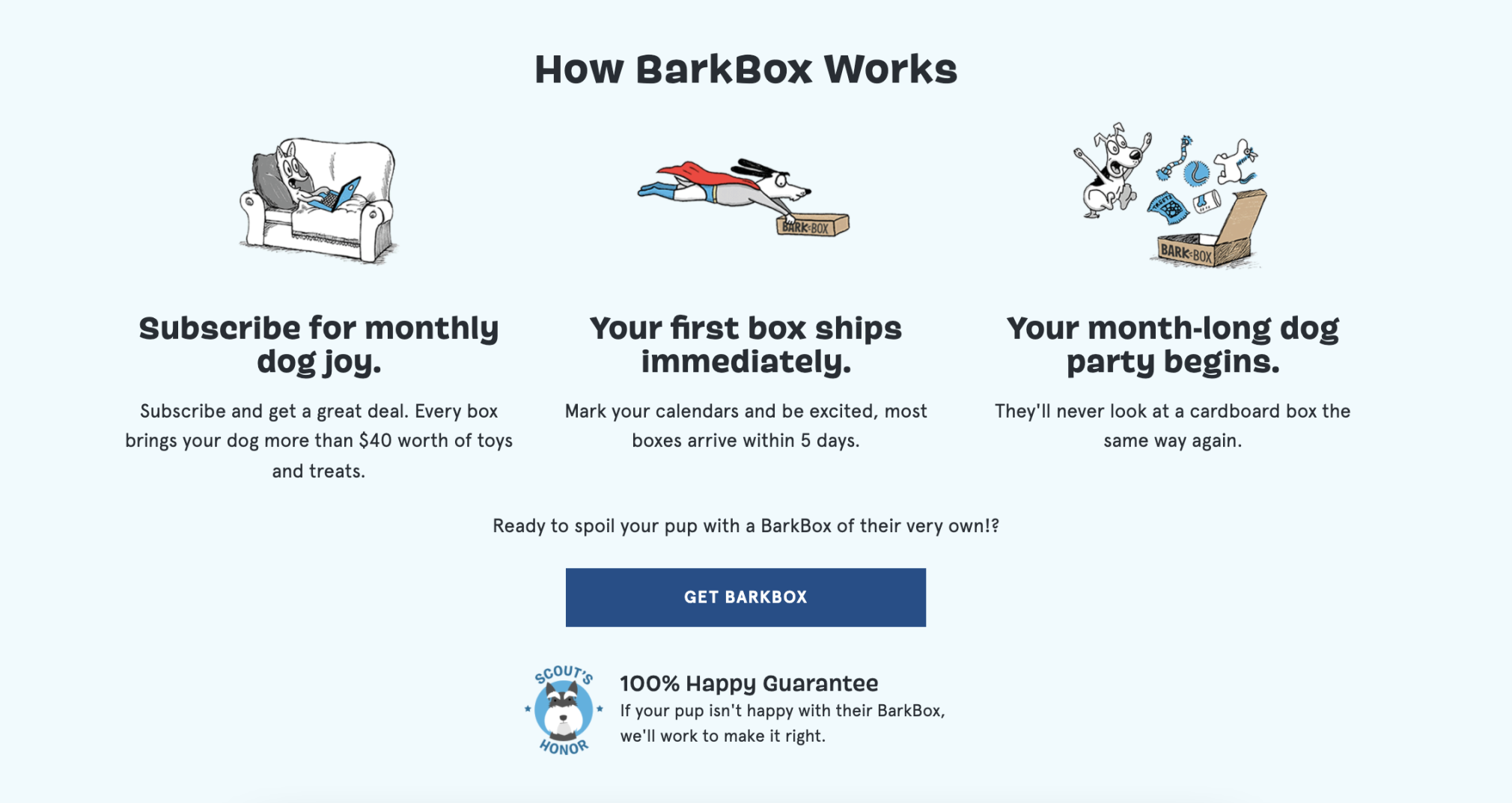
While copywriters don’t necessarily need to know in-depth technical SEO knowledge, they must know SEO basics.
From performing keyword research to crafting organized and optimized content, a writer’s work can hugely impact page performance.
Here are three reasons you need to invest in SEO copywriting for your business:
To attract qualified traffic based on the keywords your content targets To create trust by providing the answers to the questions your audience is asking To convince readers to take action (download your app, subscribe to your podcast, make a purchase, etc.)Now that we've discussed why copywriting is important, let's talk about how you can level up your copywriting skills.
10 Steps to SEO Copywriting Success
There’s more to a high-performing piece of content than meets the eye—here are 10 SEO tips to keep in mind.
We’ll cover everything from choosing keywords to identifying keyword intent to creating copy below.
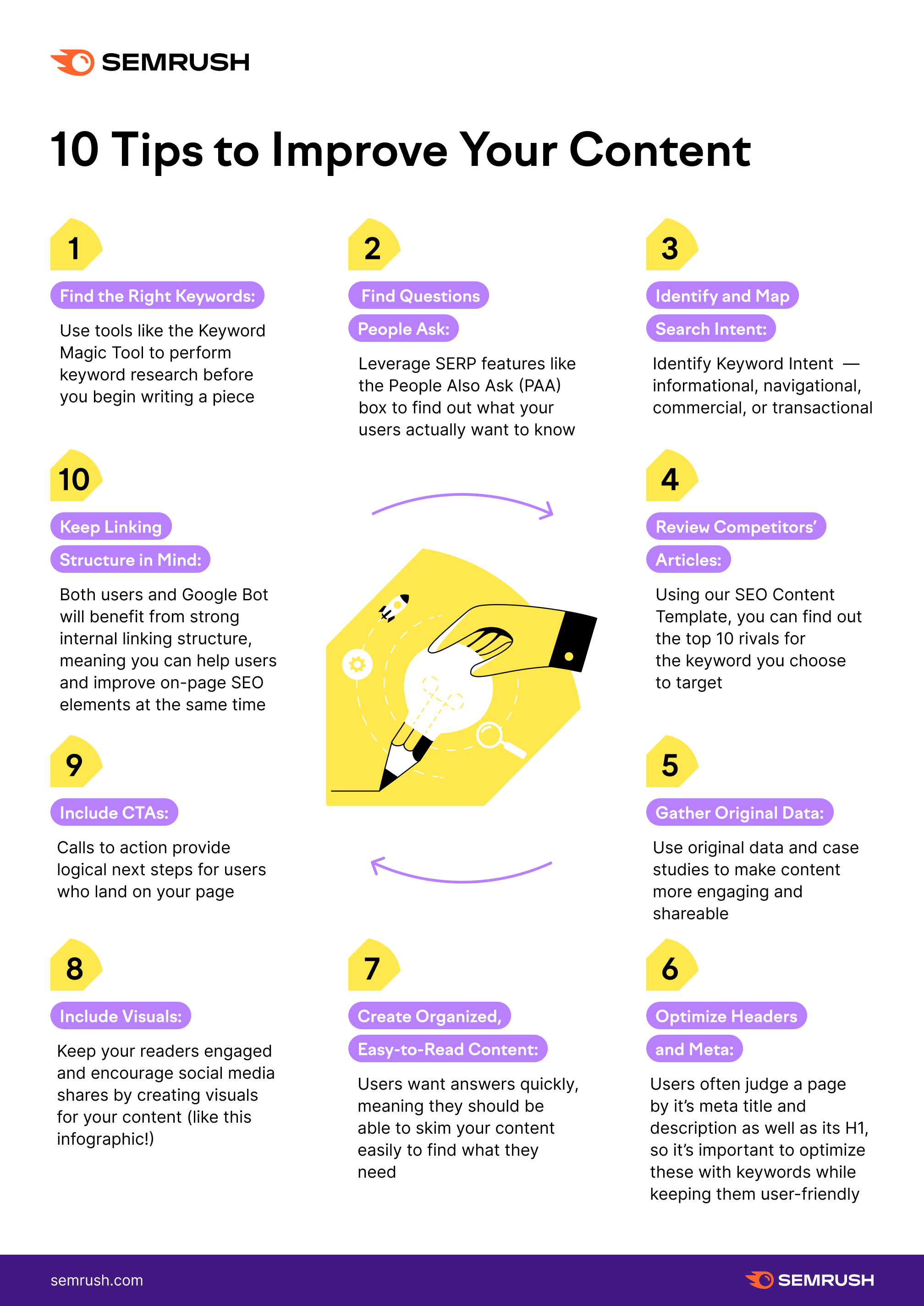
1. Find the Right Keywords
The first step for any copywriter is to identify keywords before writing.
Successfully targeting the right keywords while keeping search intent in mind is an excellent start to any writing assignment.
The Keyword Magic Tool can help you find attainable keywords within your industry:
Start by entering a primary search term, or “seed” keyword Set filters to organize results by search volume, keyword difficulty, or other metrics View your chosen keywords’ intent (more on that later) to see if they match up with your goals
Pro tip: The left-hand column within this tool allows users to view related keyword groupings. This is an easy way to find semantic keywords or find related questions to your topic.
2. Find Questions People Ask
The idea of a search engine is to make finding information as easy as possible. This is why Google continues to develop SERP features; users don’t even need to click on a page for results.
Predicting your users’ following questions is a great way to organize your content.
However, it’s also a great way to target SERP features like a PAA (People Also Ask) box.
There are several SEO tools that can help you find questions related to your topic and keywords:
AlsoAsked AnswerThePublic QuoraYou can also use our Topic Research Tool, which provides headlines, related questions, and more based on the keyword you enter.
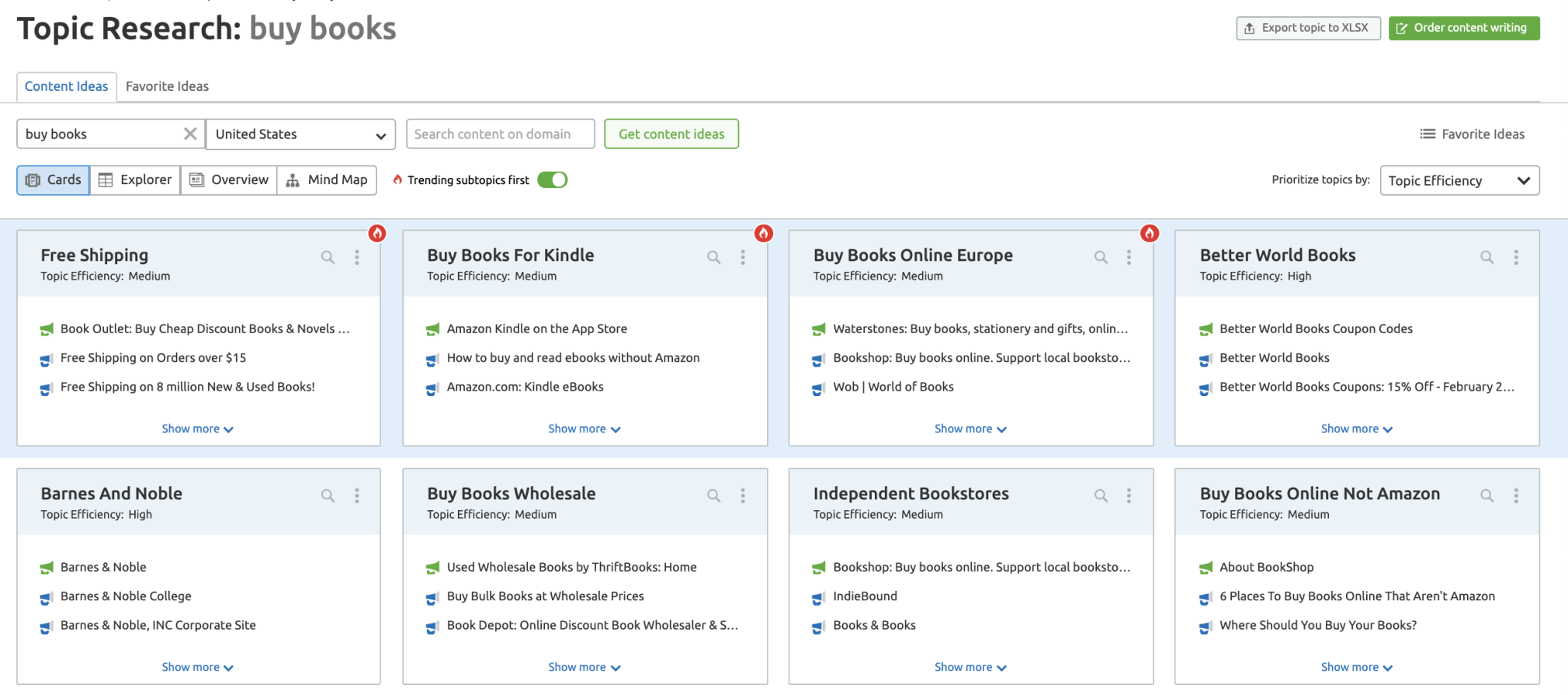
Once you identify the most popular topics, develop content that provides even more value than your competitors’ pages.
Do you need to add every result to your page? Not at all — just the ones that are relevant to your business.
For example, not all car dealerships provide car repairs. So, that car dealership without a service center wouldn't create content based on auto repair.
3. Identify and Map Search Intent
Content and user intent should vary depending on a user’s stage in the customer journey. With that in mind, your keywords should also vary based on the different intents.
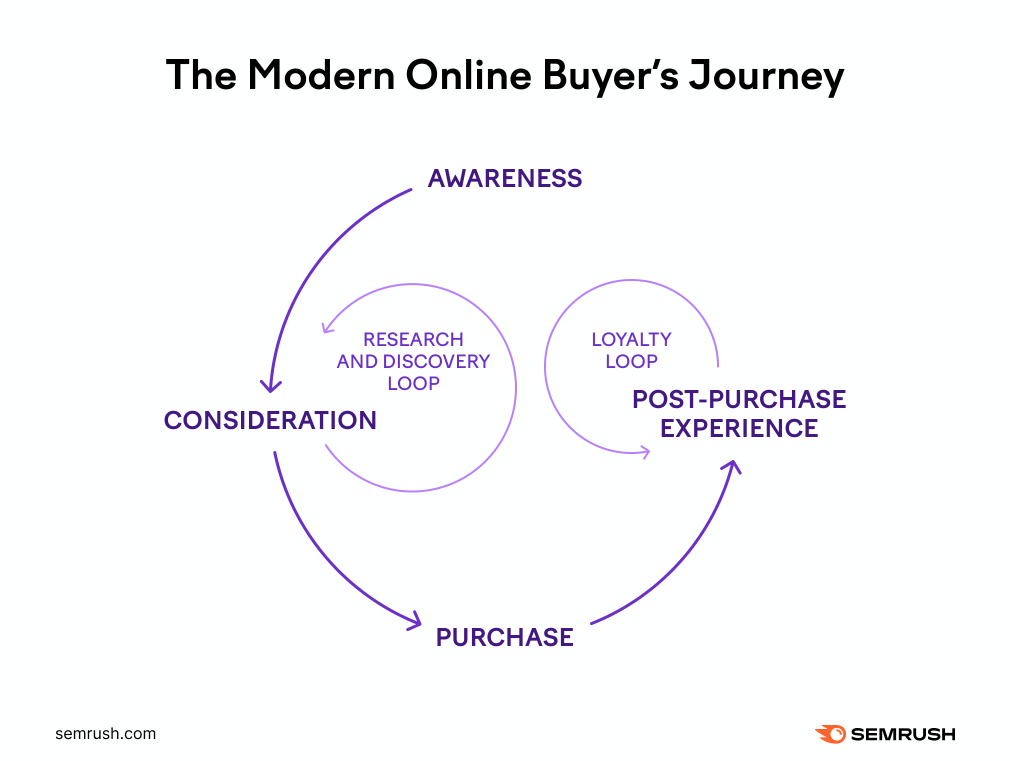
Finding “keyword intent” essentially means you're identifying the reason a user is typing in a particular search term.
One advantage of using our tools is that we’ve automated this step for you. You can view the intent of keywords across the following Semrush tools:
Domain Overview Organic Research Position Tracking Keyword Overview Keyword Gap Keyword Magic Tool Keyword ManagerBut before we get ahead of ourselves, let’s dive into the four types of keyword intent:
Informational: Users want to find more information on a specific topic, product, or industry. Example: “best coffee machines”. Navigational: Users intend to visit a specific site or page. Example: “Nespresso coffee machine types”. Commercial: Users consider a purchase and want to investigate their options. Example: “coffee machines comparison”. Transactional: Users aim to purchase a product or service. Example: “buy a new Nespresso coffee machine”.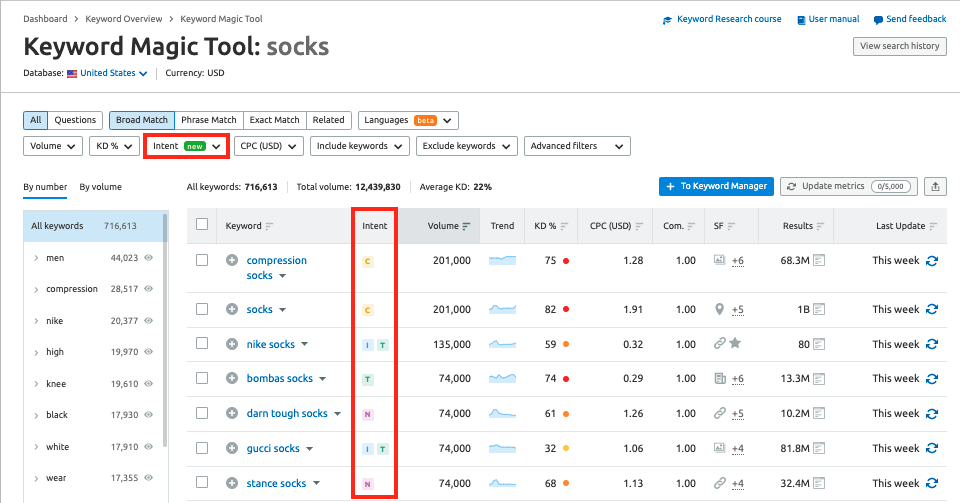
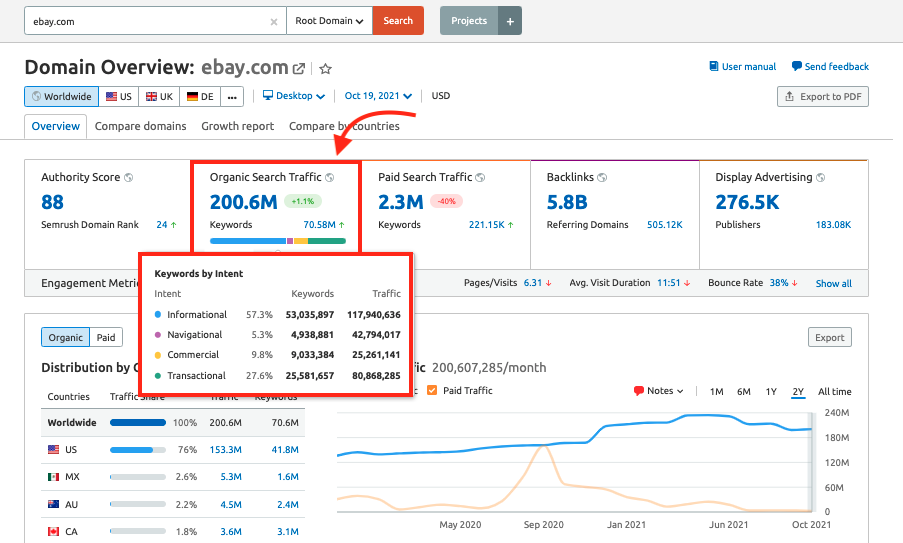
Let’s imagine your business sells tomato plants and tomato plant accessories. You want customers to visit your site with the commercial intent to compare and potentially purchase.
Next, perform a broad match search for “tomato plant” in the Keyword Magic Tool. You’ll see plenty of information, including search intent and difficulty.
Use the commercial intent filter. You can see that “rutgers”, “bonnies”, and “sungolds” are the top three keywords that users search for.
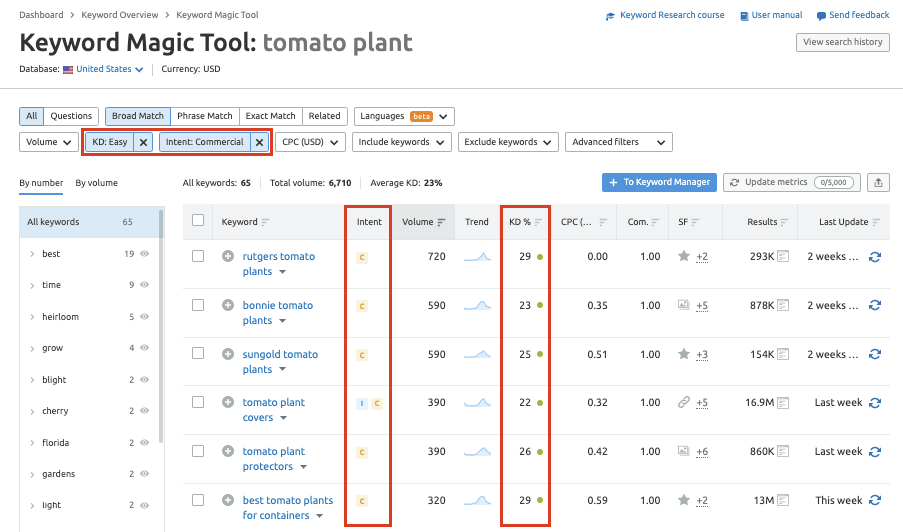
Armed with this information, you should target these keywords to match the commercial search intent of the user.
4. Check Competitors’ Articles for Your Target Keywords
Use I Search From or a Chrome Incognito window to see how your competitors are doing on the SERP.
You can also use the Keyword Overview Tool to get a detailed analysis of the SERP for that keyword.
Remember, though, that it’s important to audit the top pages in the SERP manually. This will help you create an even more useful page than your competitors’ pages.
Once you get going, Semrush makes it easy to get on-demand SEO recommendations. Use the SEO Content Template to:
See how your top 10 competitors use your target keywords in their articles Discover which semantically-related keywords in their articles View competitor pages’ readability score Understand how long competitors’ pages are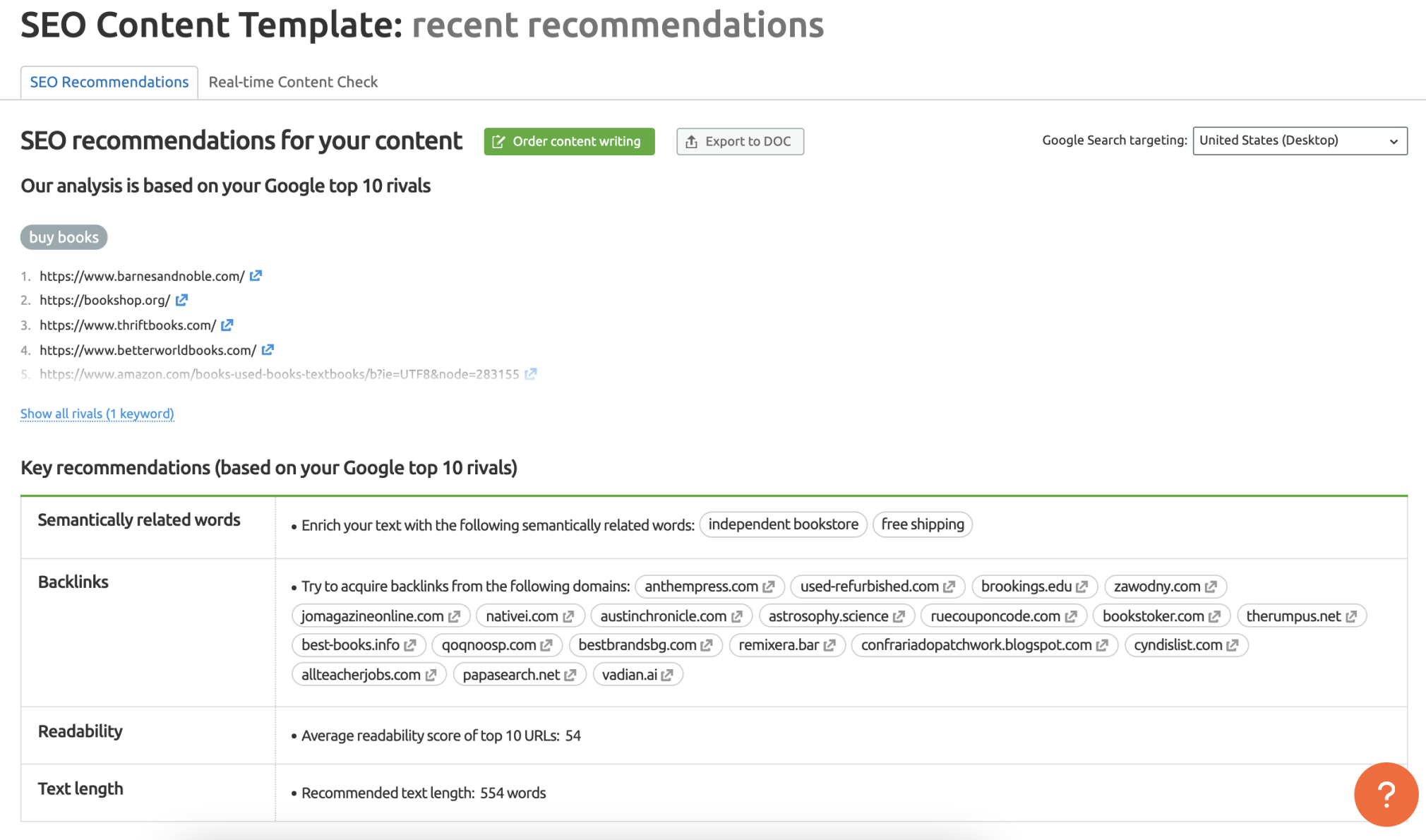
You can export this data to prepare a content outline or start crafting your content with the SEO Writing Assistant.
5. Gather Original Data
One tactic to engage readers is to share original data and case studies. Not only can this help you generate backlinks, but it can also solidify your business as a leader in your field.
Hiring a freelancer? Keep in mind that they may not have access to data from your company. They may need some background information or stats before writing a piece.
An internal writer may not have all the information, either, so gathering data is essential. Here are a few ways to get data for a case study or original research piece:
Leverage social media: Set up polls on your social networks and ask followers about their preferences, lifestyle, etc. If you share the results of your poll, other writers in your industry may find the results helpful as well. Uncover patterns in sales data: There’s probably a wealth of data available to you if you’re an internal writer. This can be especially useful when industries are under stress (positive or negative). Industry writers tend to search for reputable sources for stats and data. Incorporate user-generated content: There's no better advertising than recommendations straight from your customers. Ask your customers to share success stories with stats on how your product or service has helped them. For example: “How an SEO Agency Helped an Artisan Bakery Increase Organic Traffic by 214%”.Using original data and visuals encourages readers to share your message on social media platforms — and hopefully contribute to your link building.
6. Optimize Your Header, Meta Title, and Meta Description
When looking at the SERPs, the first thing readers see is the page’s meta title and description.
And once they’re on the page, the header is the first thing they will see. Keeping meta and headlines clear can boost your organic click-through rate and increase page views.
Take note that Google may change your meta on the SERP depending on the user’s query. However, it’s still important to provide an optimized title or description for search engines and users.
Your title tag and meta description should help both users and search engines determine what your content is about. Even if Google decides to switch things up, you’ll be solid so long as your page contains quality content.
Meta Titles
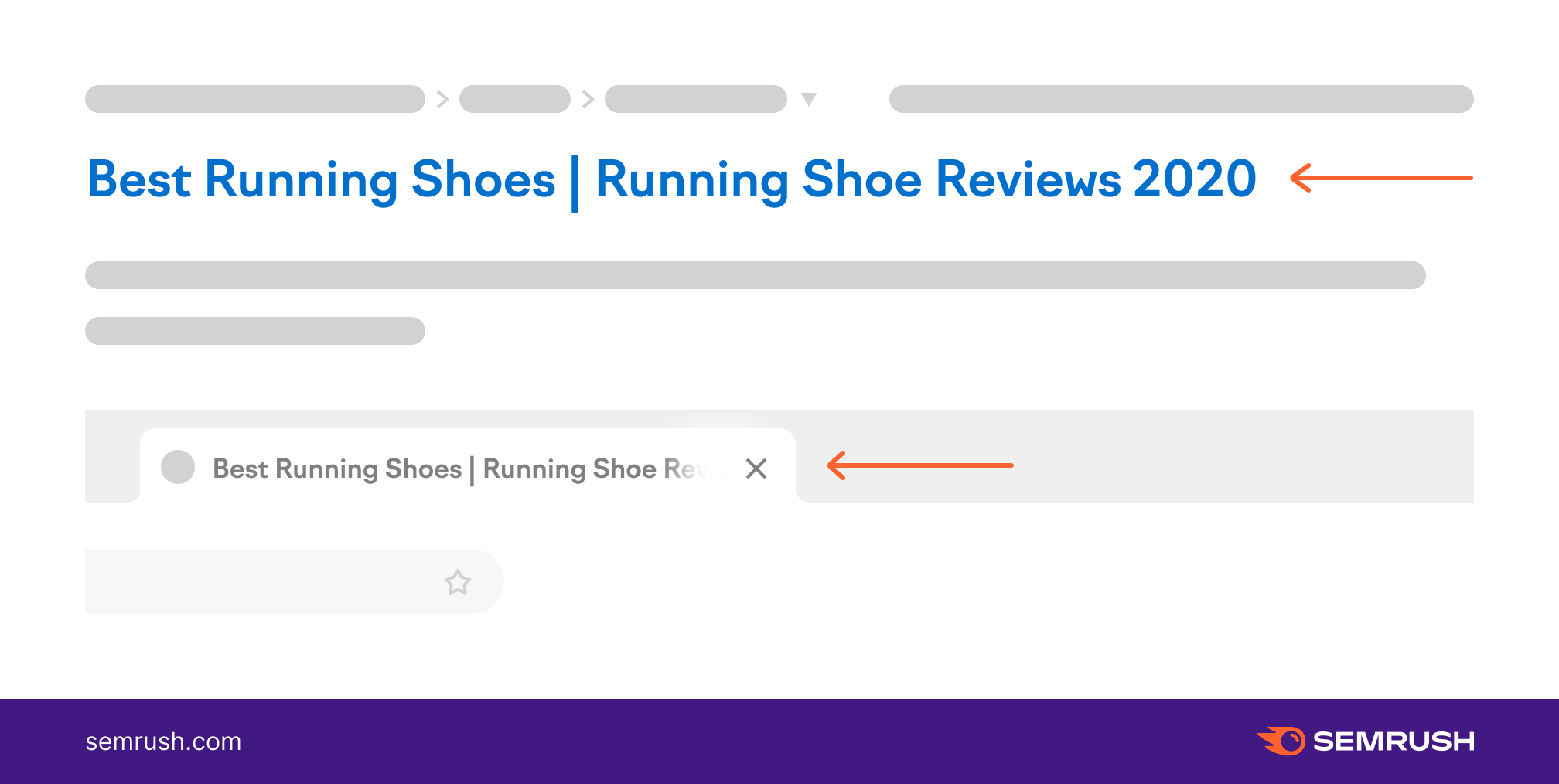 Is unique and includes your target keyword Is 55-60 characters long. Google shortens title tags that are longer than 55-60 characters. There’s also a 600-pixel width limit (which can vary depending on the device). Sends a message that accurately matches the content and search intent. If the content doesn’t live up to users’ expectations after clicking the title, they will just bounce off the page.
Is unique and includes your target keyword Is 55-60 characters long. Google shortens title tags that are longer than 55-60 characters. There’s also a 600-pixel width limit (which can vary depending on the device). Sends a message that accurately matches the content and search intent. If the content doesn’t live up to users’ expectations after clicking the title, they will just bounce off the page.Meta Description
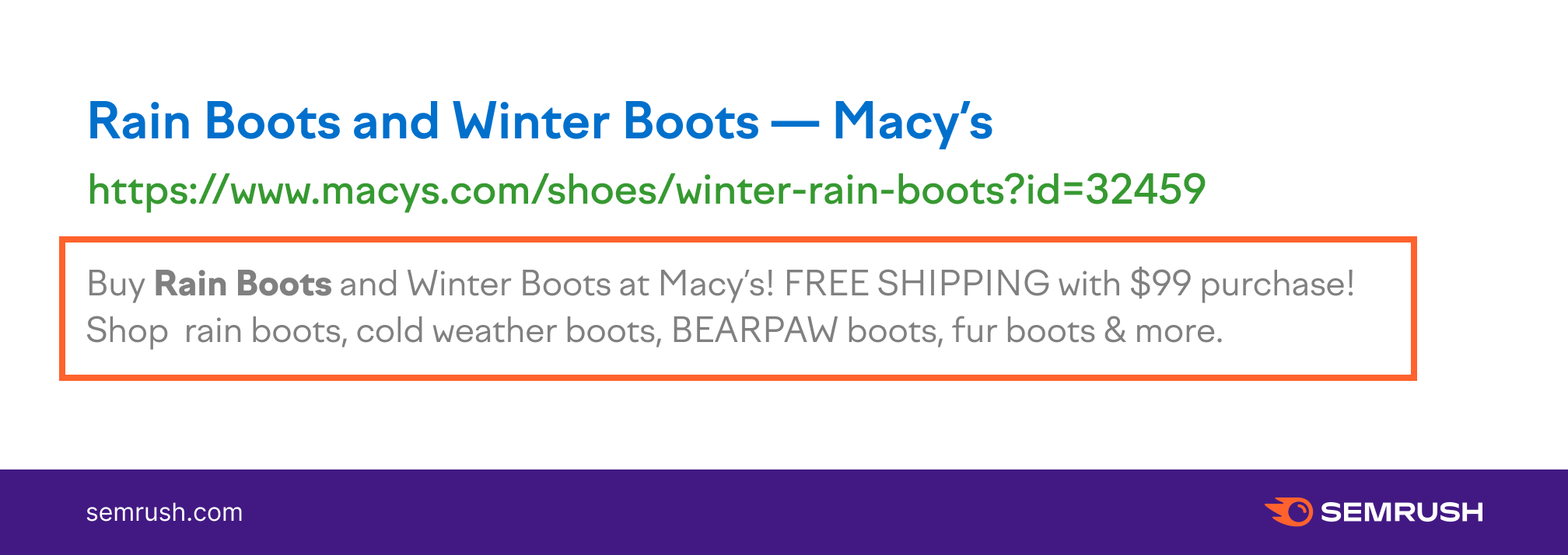 Contains target keywords. Includes calls-to-action and/or targets an emotion. Meta descriptions can be any length, but Google generally shortens them to 155-160 characters. For user experience purposes, it's best to keep them brief. It should be unique and describe a webpage. Make it meaningful — offer a compelling reason to visit the specific page. Google encourages including certain information such as price and manufacturer scattered throughout a page.
Contains target keywords. Includes calls-to-action and/or targets an emotion. Meta descriptions can be any length, but Google generally shortens them to 155-160 characters. For user experience purposes, it's best to keep them brief. It should be unique and describe a webpage. Make it meaningful — offer a compelling reason to visit the specific page. Google encourages including certain information such as price and manufacturer scattered throughout a page.H1 Header
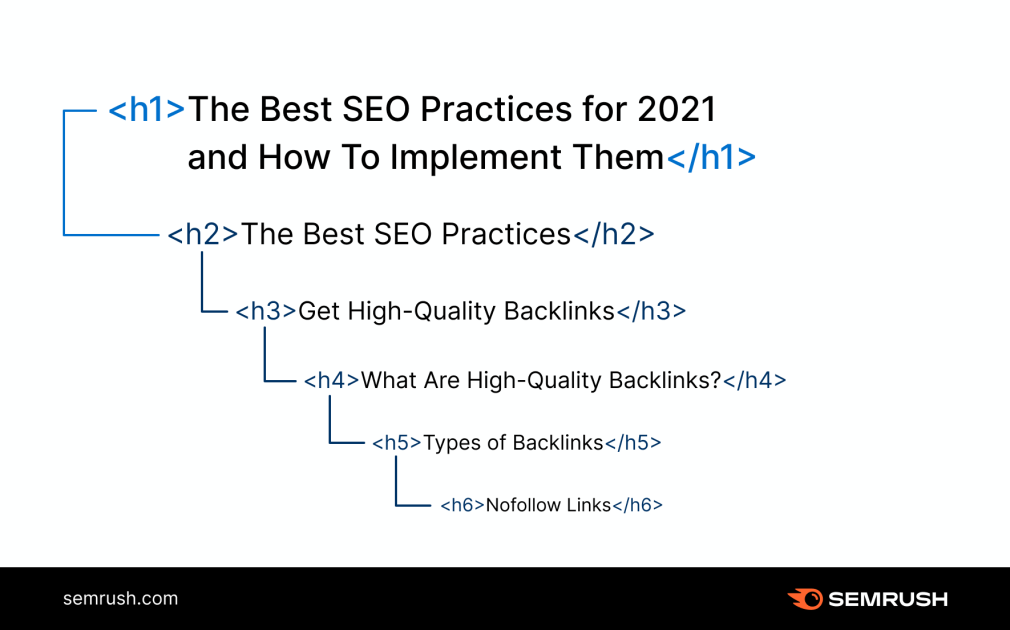 It fits within the 600-pixel width. Within this width, readers can see the full title. Otherwise, Google shortens it. May include numbers (for example: “10 Quick Ways to Create the Perfect Title”). Articles with list headlines get up to 2x more traffic and up to 2x more shares than other types. May include bracketed clarifications such as [interview], [video], [2021]. Articles with bracketed clarifications perform 38% better than those without. This suggests that readers like to have a full picture of what they will get when they click. Includes action verbs such as “learn,” “take,” “boost,” “enhance,” etc. This may help readers understand what they will gain from the page. Motivates users to go to the website — emotional triggers may help get users’ attention and create interest.
It fits within the 600-pixel width. Within this width, readers can see the full title. Otherwise, Google shortens it. May include numbers (for example: “10 Quick Ways to Create the Perfect Title”). Articles with list headlines get up to 2x more traffic and up to 2x more shares than other types. May include bracketed clarifications such as [interview], [video], [2021]. Articles with bracketed clarifications perform 38% better than those without. This suggests that readers like to have a full picture of what they will get when they click. Includes action verbs such as “learn,” “take,” “boost,” “enhance,” etc. This may help readers understand what they will gain from the page. Motivates users to go to the website — emotional triggers may help get users’ attention and create interest.7. Create Organized, Easy-to-Read Content
Half of the U.S. population reads below an 8th-grade reading level. However, this doesn’t mean they cannot read more complicated texts.
People use search engines to look for specific answers or advice. This means they want an answer quickly without sifting through many complex paragraphs.
If your content isn’t user-friendly, it probably won’t gain many likes, shares, or conversions.
The first step is to know your target audience. While professionals in specific industries may be looking for something more in-depth, it's still important to keep things readable. In this case, writing up to a 12th-grade reading level would work fine.
Let’s dive into some ways to make your copy more readable.
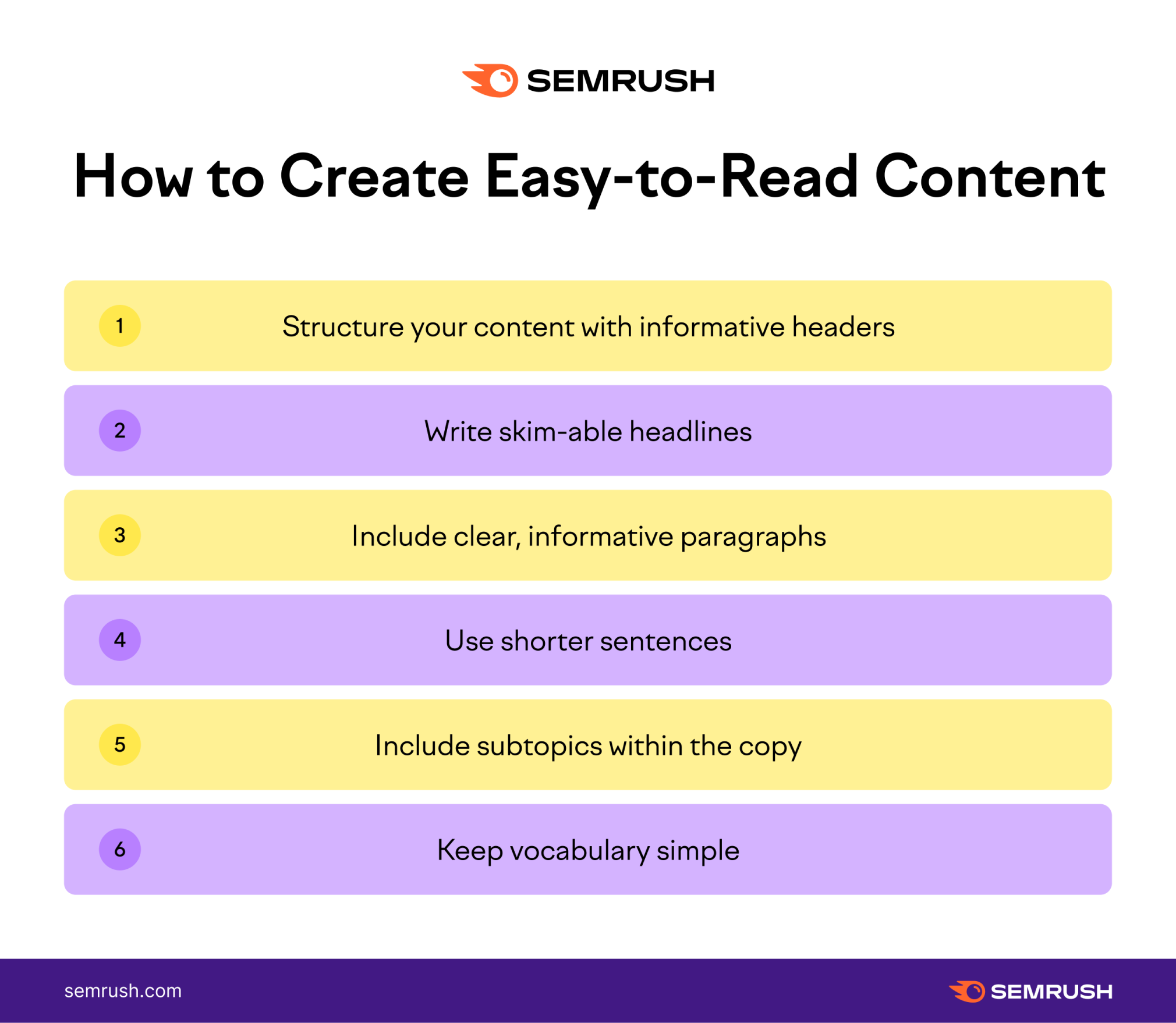
Good Structure
Good structure guides users and search engines through your content as smoothly as possible. Each new point should be reflected in H2, H3, and H4 headings.
According to our research, 36% of articles with H2 and H3 tags have better performance in traffic, shares, and backlinks.
Skim-able Headlines
Readers typically skim articles before they read them. According to the study by Nielsen Norman Group, only 16% of people will read your copy word by word.
Headlines should inform readers what they will learn by reading individual paragraphs or the page as a whole.
Think about user intent, provide answers in your headlines, and elaborate in the following paragraphs.
Clear and Informative Paragraphs
Like with headlines, readers like to skim through paragraphs to find the information they need quickly. Vast walls of text are daunting and challenging to scan.
Nielsen Norman Group’s Eye-Tracking Study revealed that users read in an F-shaped pattern.
Here’s an example:
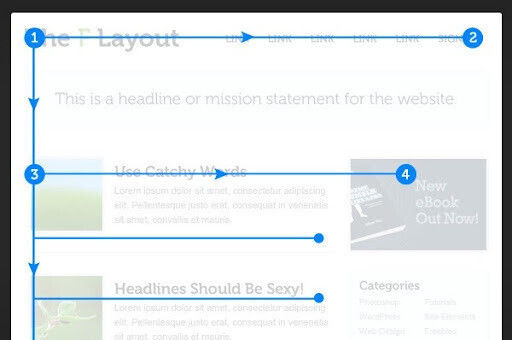 Image courtesy of UX Planet
Image courtesy of UX PlanetMake sure the copy’s paragraphs are short and start with the main idea. Clarity and concision are the keys to excellent readability and user experience. The more white space, the better the user experience.
Bullet points and numbered lists
Break up long sections with bullets or numbered lists and graphics that inform the user.
Lists visually offset information, making it easier for users to skim the page. Additionally, it can be useful to implement lists when walking the reader through instructions.
Short Sentences
With shorter sentences, you are once again making the reader’s job easier and your message more digestible.
Subtopics Within the Copy
Your previous keyword research should inform the subtopics in your copy. While users search for a specific query, they probably have follow-up questions you can answer as well.
Be sure to use H2s, H3s, and H4s to include related subtopics. It’s also important to structure these subtopics in a logical order.
Simple Vocabulary
Make sure to limit the use of tricky words. You can educate your readers on industry and brand terms, but it’s also important to provide a straightforward explanation.
If you want to check the readability score, use the SEO Writing Assistant tool. It automatically analyzes your target keywords and suggests the optimal readability level for your copy based on your top rivals.
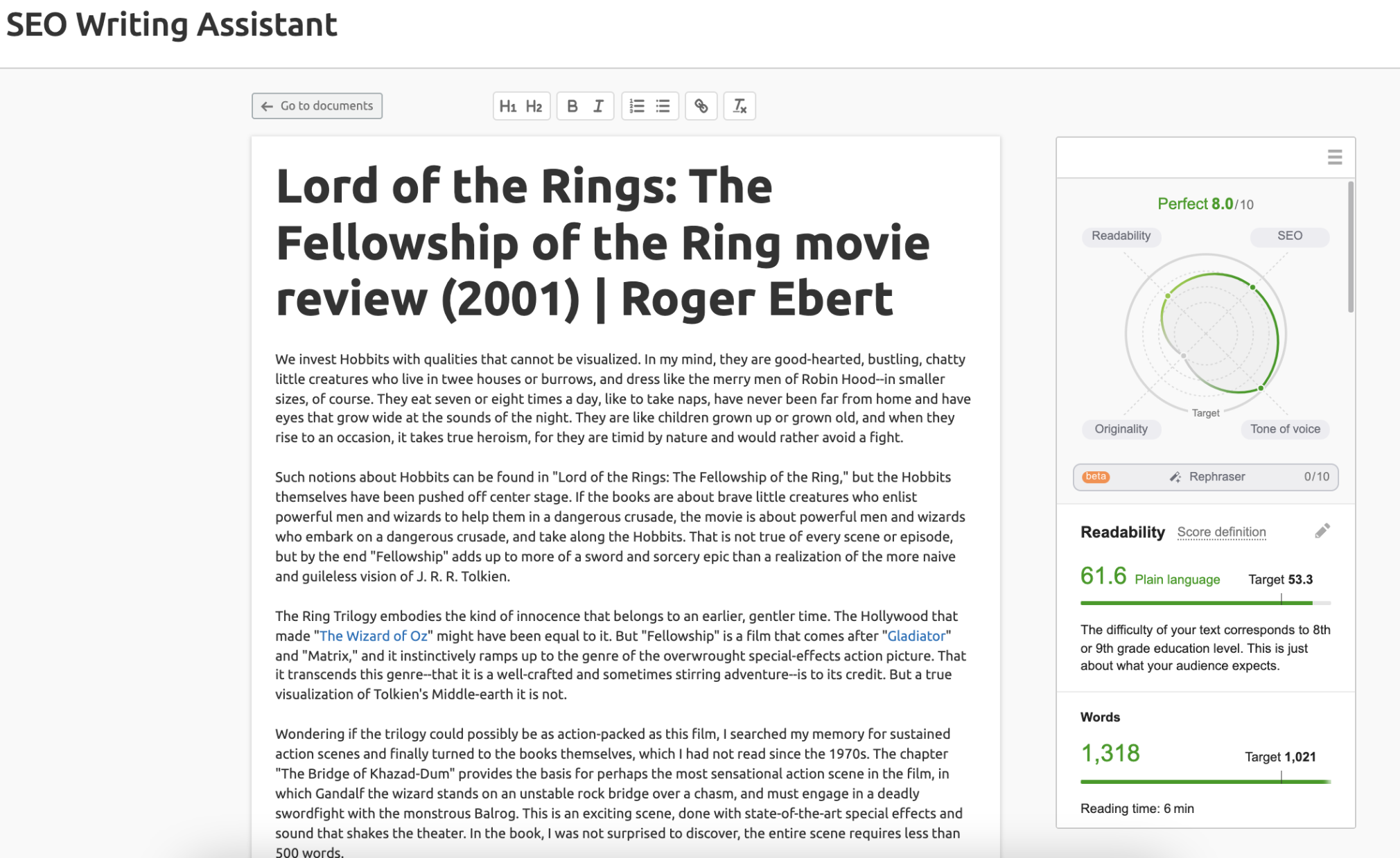
With this tool, you will also:
Find out which sentences are too long. Discover which parts of the copy may not be original. Ensure your text is perfectly structured for a target keyword and written in an SEO-friendly style. Make sure your content piece complies with your overall brand voice — casual, neutral, or formal.8. Include Visuals
Use visuals throughout your page — videos, images, charts, infographics, etc. In 2019, 74% of content marketers used visuals in more than 70% of their pages — because it works.
The use of visual elements can increase readers’ time on page and trigger them to share the graphic on social media. This strategy can increase the reach of your content, and the media, when appropriately optimized, could be used in the SERPs.
And don’t forget about adding image alt tags (descriptions for images you use throughout your copy). Google has been providing more image results over the years, so this can help with search engine rankings.
Keep in mind that alt tags are for accessibility purposes as well. Those who use screen readers use alt text to learn more about particular images on particular pages.
9. Include CTAs (Calls-to-Action)
One primary purpose of copywriting is to drive users further along the customer journey.
This is where calls to action come in handy.
Remember the term “search intent”? A user will (ideally) land on your page for a reason. If they were looking for informational content, you might want them to move to a product page next.
Use CTAs to show your users what they may be looking for next. You can use simple links, buttons, images, and more.
From a copywriting perspective, this can improve your copy’s conversion rate and the ROI of your content.
From an SEO perspective, this may improve your page views, decrease bounce rate, and send positive engagement signals to Google.
Pro tip: Include CTAs throughout your copy as readers might not read the entire page. Be sure to include them sparingly so your page isn't spammy.
10. Keep Linking Structure in Mind
Google bots get stuck when they land on a page that doesn't link to other pages. In a way, users are similar. If they don’t have clear next steps, they may not be interested in putting in the time and effort.
But why would you drive people off your page with internal and external links?
By linking to external content, you can build trust around your copy. A link to another site is essentially a vote of confidence for that site. It’s helpful to support your claims with other authoritative websites. And who knows — you could get a backlink. By linking to internal content, you can better guide your user to their logical next steps (where ideally they’ll convert). You can also improve the linking structure of your site by linking to pages related to your content.Pro tip: Ensure that external links open up in a new window so users don't leave your site.
How to Write for SEO: Writing for Humans and Search Engines
“SEO copywriting” doesn’t simply mean writing copy and sprinkling in some keywords. Because search engines favor content that meets users’ needs, writing “for SEO” and “for users” is essentially the same.
The above tips offer a good place to start—while you should be keeping SEO best practices in mind, remember that your main goal is to serve your users.
For example, it’s best to create easy-to-skim content for users. This means:
Writing short paragraphs Organizing content with informative H2s Visually offset information with bullets and chartsBut you also can't leave out SEO best practices, like choosing the right keywords. After all, your users might not find your content if you don't target the right keywords.
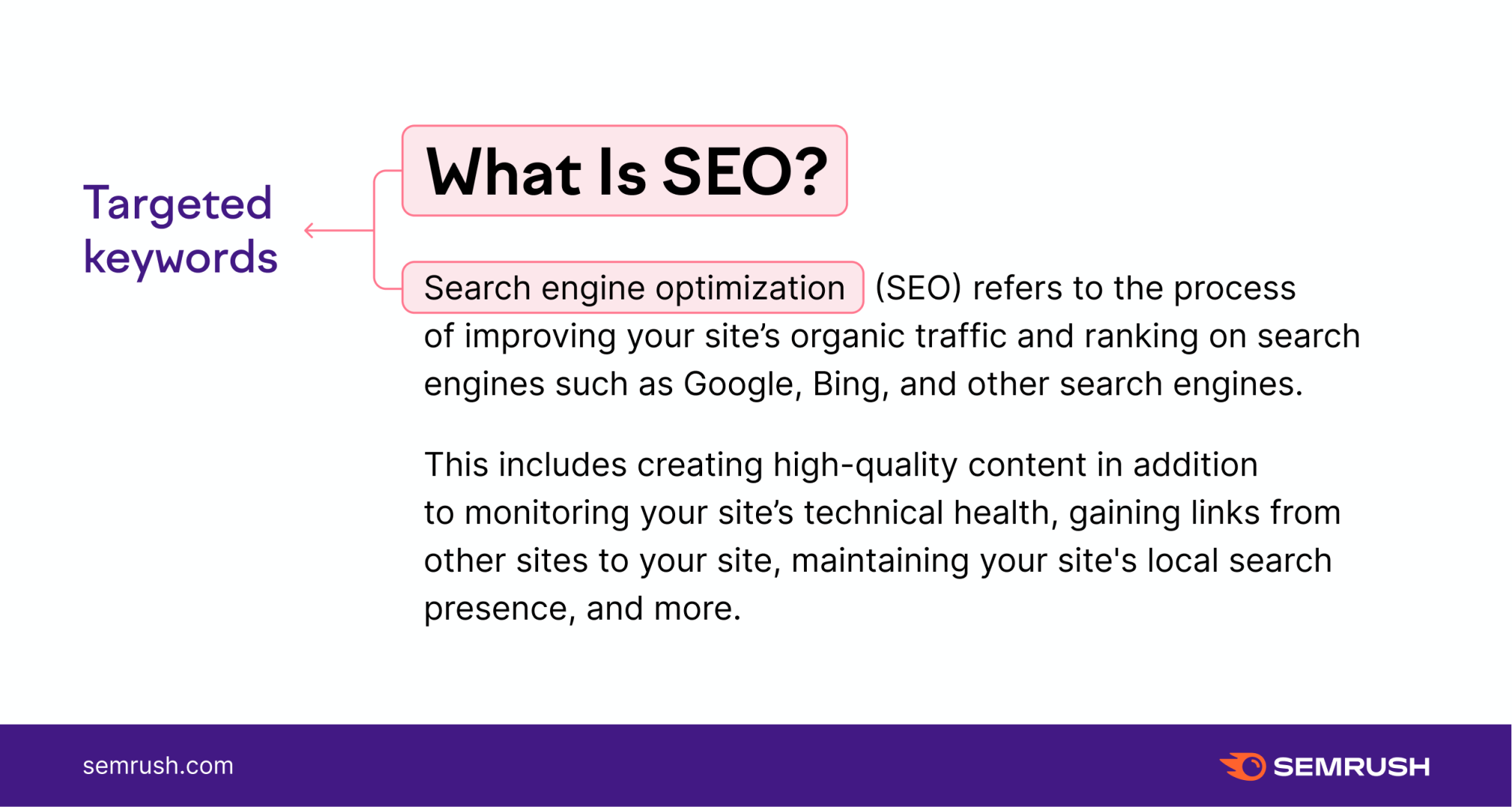 This example answers the question in a quick, clear way, but also targets the necessary keywords.
This example answers the question in a quick, clear way, but also targets the necessary keywords.At the same time, though, simply spamming keywords on your page isn't going to cut it either because users (and Google) can see right through that tactic.
If you don’t have the time or experience to write your own content, it’s a good idea to hire a professional copywriter who knows a thing or two about SEO and content strategy.
And, for you own research, feel free to read our piece on learning SEO.
Top SEO Copywriting Tools
If you want to outsource content creation, you can do so with Content Marketplace. The Content Marketplace allows you to access professional copywriters without manually searching for them.
Planning to write your own content? Here are some SEO tools we’d recommend taking a look at to help with all the above (and more!):
Top Semrush Tools for SEO Copywriting
Keyword Magic Tool: Narrows down your keyword research by finding the best keywords to target with your copy Topic Research: Provides new content ideas and uncovers what people search for around your topic Organic Research: Shows information on how your rivals are performing SEO Writing Assistant: Gives content and SEO optimization recommendations based on the top 10 ranking pages for a particular keyword On-Page SEO Checker: Helps you set up monitoring after your copy is published. SEO Content Template: Gives SEO recommendations for your future content based on top-10 competitorsOther Helpful Writing and Editing Tools
To get the process started, take a look at a variety of our favorite free keyword research tools. Here are some additional tools that can help:
Google Search Console and Google Analytics for tracking page performance Google Trends and AlsoAsked.com for finding trending topics Grammarly and the Hemingway App for real-time editing Short URL or Bitly to gauge the performance of social media sharing Canva for custom graphics Unsplash, Flickr, or Pixabay for royalty-free images Google Docs and Google Sheets for facilitating team collaboration while writingFinal Thoughts
By following the above steps, you’ll be well on your way to creating high-quality content.
Once you publish your content, be sure to measure your performance by tracking KPIs like:
Conversions Rankings Click-through rate Social media traction Brand awarenessKeep track of your KPIs over time, update existing content as needed, and create new content to fill the gaps.
So long as you write user-friendly content that answers questions people are asking and is based on keyword data, you’ll be well on your way to a library of helpful content.
Happy writing!
Innovative SEO services
SEO is a patience game; no secret there. We`ll work with you to develop a Search strategy focused on producing increased traffic rankings in as early as 3-months.
A proven Allinclusive. SEO services for measuring, executing, and optimizing for Search Engine success. We say what we do and do what we say.
Our company as Semrush Agency Partner has designed a search engine optimization service that is both ethical and result-driven. We use the latest tools, strategies, and trends to help you move up in the search engines for the right keywords to get noticed by the right audience.
Today, you can schedule a Discovery call with us about your company needs.
Source:





